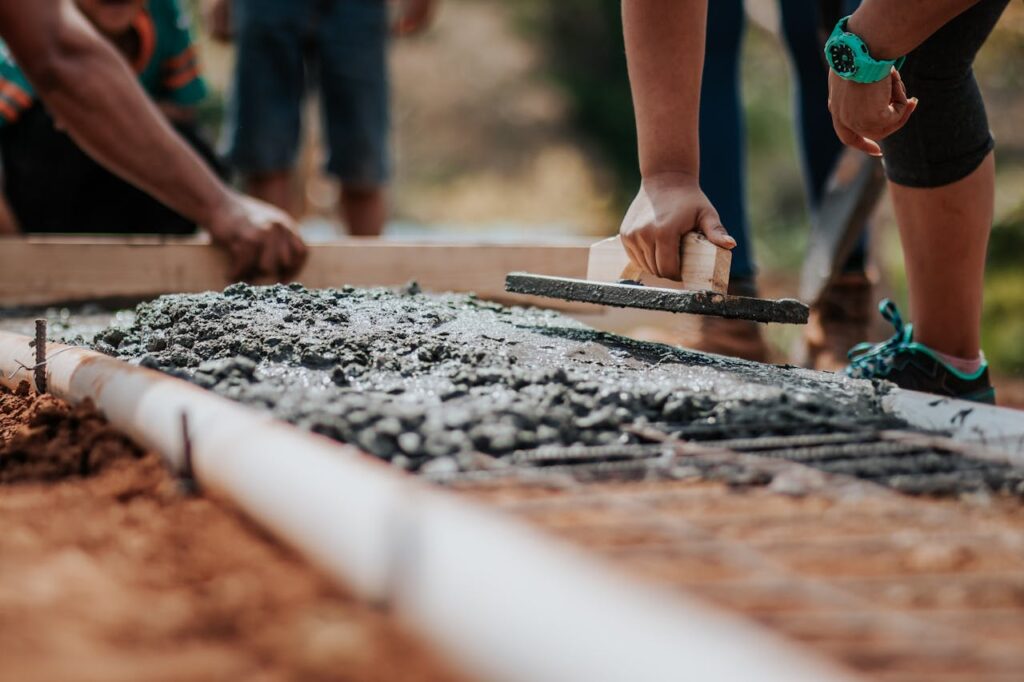
Cracked sidewalks are a common sight across the USA. From harsh winters to root growth, numerous factors contribute to uneven or cracked concrete slabs. While a minor crack might not seem like a big deal, it can become a tripping hazard and lead to further damage if left unaddressed. Here at Hi-Tech Construction NY, we understand the importance of maintaining safe and aesthetically pleasing concrete sidewalk repair. This comprehensive guide will equip you with the knowledge and steps necessary to tackle concrete sidewalk repair projects yourself, or help you decide when to call in the professionals.
Understanding Sidewalk Cracks
Before diving into repair techniques, fix concrete cracks let’s explore the different types of you might encounter:
- Hairline cracks: These are thin, usually less than ¼ inch wide, and often pose minimal structural concerns. They can be filled with a flexible sealant.
- Stress cracks: Wider than hairline cracks (¼ inch to ½ inch), but still not posing a significant structural risk. They are caused by shrinkage or settling of the concrete.
- Expansion cracks: These cracks run perpendicular to the direction of the sidewalk and are typically caused by underlying soil movement or tree root growth. They require more extensive repair.
- Shattered concrete: This is the most severe type of damage, often caused by significant weight or pressure. Repairing requires removing and replacing the damaged section.
DIY vs. Professional Repair: When to Take Action
Now that you understand the types of cracks, the next step is determining if you can handle the repair yourself or need professional help. Here are some factors to consider:
DIY approach:
- Crack size: Hairline and some stress cracks (up to ½ inch) are suitable for DIY repair using a concrete crack filler or flexible caulk.
- Your comfort level: Are you comfortable with basic tools and following detailed instructions? There are readily available repair kits with easy-to-follow instructions.
- Time commitment: While DIY repairs can be budget-friendly, they require time investment.
Professional approach:
- Large cracks or shattered concrete: Repairs involving extensive removal and replacement, or situations where cracks are wider than ½ inch or accompanied by movement, require professional experience.
- Multiple cracks or uneven slabs: Uneven slabs with numerous cracks indicate a more significant underlying issue that necessitates professional assessment and repair.
- Limited time or mobility: If you lack the time or physical ability to handle the project, hiring a professional is the safer option.
Safety First: Regardless of your chosen approach, prioritize safety. Always wear gloves, eye protection, and proper footwear when working with concrete and tools.
DIY Sidewalk Crack Repair: A Step-by-Step Guide
If you’ve decided to tackle a minor crack yourself, here’s a step-by-step breakdown:
Tools and Materials:
- Safety gear: Gloves, eye protection, dust mask, sturdy shoes.
- Cleaning tools: Wire brush, garden hose, or pressure washer (optional)
- Crack preparation tools: Hammer and chisel (for larger cracks), utility knife (for hairline cracks)
- Backer rod (optional): for cracks wider than ½ inch.
- Concrete crack filler or flexible caulk: Choose a product suitable for exterior use and crack size.
- Caulking gun (if using caulk): Ensures consistent application.
- Edging tool (optional): Creates a smooth finish.
- Sponge or broom: For cleanup and finishing touches.
Steps:
- Clean the crack: Remove any dirt, debris, or loose concrete from the crack. Use a wire brush, garden hose, or even a pressure washer if necessary. Ensure the crack is clean and dry before proceeding.
- Widen the crack (optional, for larger cracks): If the crack is wider than ½ inch, consider widening the top slightly with a hammer and chisel to provide a better anchor for the filler. Hairline cracks generally don’t need this step.
- Apply backer rod (optional): Push backer rod into the cleaned crack, ensuring it’s slightly deeper than the final surface level. This will prevent the filler from sagging and create a more durable repair.
- Apply concrete crack filler or caulk: Depending on the chosen product, you may use a trowel or caulking gun. Follow the manufacturer’s instructions for application, ensuring the filler completely fills the crack.
- Smooth the surface: Use an edging tool or a damp sponge to smooth the filled crack and create a level surface with the surrounding concrete.
- Clean up: Remove any excess filler or caulk with a damp cloth before it dries completely.





Leave a Reply